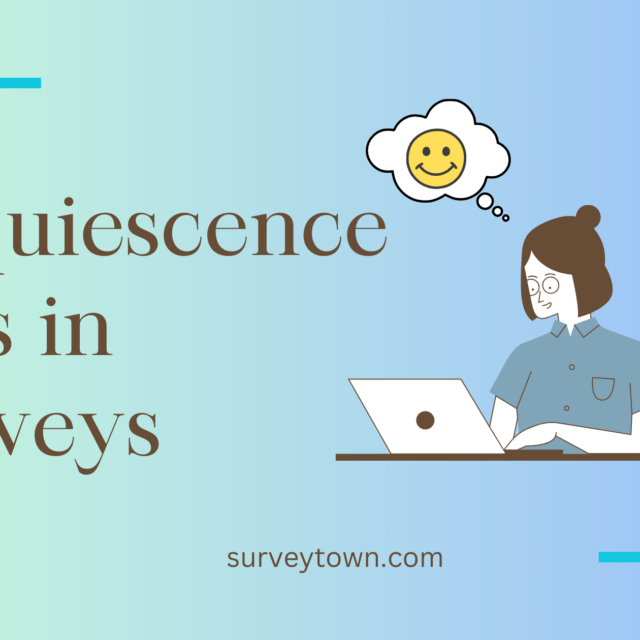Welcome to our expert guide on consumer complaint behavior (CCB). Here, we will take you on a journey through the fascinating world of CCB and reveal its profound impact on businesses. Consumer complaint behavior encompasses the actions taken by dissatisfied consumers when they encounter issues with a product or service. As an astute business owner, it is crucial for you to grasp its significance as it directly influences customer satisfaction and loyalty. By delving into the depths of CCB, you can uncover valuable insights that will empower your business to thrive.
Click here for our in-depth guide on consumer behavior!
Unveiling the Psychology Behind Consumer Complaints
When it comes to understanding consumer complaint behavior, it’s not enough to simply acknowledge that customers are unhappy with a product or service. To truly grasp the intricacies of this phenomenon, we must delve into the psychology behind why consumers complain and how their expectations shape their grievances.
The Driving Force of Dissatisfaction
- Consumers often resort to complaining when they feel dissatisfied with their purchase experience.
- This dissatisfaction can stem from various factors such as product quality, customer service, or unmet expectations.
- It is crucial for businesses to understand the root causes of dissatisfaction in order to effectively address and resolve issues.
Expectations and Perceived Performance
- Consumer complaints are closely linked to the gap between what customers expect and what they perceive as actual performance.
- When products or services fail to meet these expectations, customers may express their discontent through complaints.
- By managing customer expectations through realistic promises, businesses can minimize potential complaints.
Cognitive Dissonance Theory
- Cognitive dissonance refers to the discomfort experienced when there is an inconsistency between beliefs, attitudes, or behaviors.
- In relation to consumer complaint behavior, cognitive dissonance theory suggests that individuals tend to complain when they perceive a significant discrepancy between what they expected and what they received.
Attribution Theory
- Attribution theory explores how individuals assign causality for events or outcomes.
- In terms of consumer complaint behavior, customers may attribute blame either internally (to themselves) or externally (to the business).
- Understanding attribution patterns provides insights into how consumers assign responsibility for negative experiences.
Emotional Factors
- Emotions play a pivotal role in driving consumer complaint behavior.
- Negative emotions such as anger, frustration, disappointment, or betrayal often serve as motivators for individuals voicing their concerns through complaints.
- Recognizing and addressing these emotional aspects is crucial for effectively resolving customer issues.
By comprehending the psychological factors that influence consumer complaints, businesses can gain valuable insights into their customers’ mindsets and tailor their strategies accordingly. The next section will delve into the different types of consumer complaint behavior to provide a comprehensive understanding of this topic.
Unlocking the Secrets of Consumer Complaint Behavior
As a business, it is crucial to have a deep understanding of consumer complaint behavior in order to effectively address and resolve customer issues. By categorizing complaints into different types, you can tailor your response strategies accordingly and ensure that each customer concern is handled with care. Let’s explore some common types of consumer complaint behaviors:

Direct Complaints
These are straightforward complaints made directly to your company through various channels such as phone calls, emails, or in-person interactions. When customers reach out directly, it provides an opportunity for immediate resolution and allows you to address the issue promptly.
Example: Imagine a customer who contacts your restaurant to complain about receiving cold food. They request a replacement or refund, giving you the chance to rectify the situation swiftly.
Public Complaints
With the advent of social media platforms, consumers now have a powerful tool at their fingertips to voice their grievances publicly. Public complaints can quickly gain traction and significantly impact your business’s reputation if not handled appropriately.
Example: Consider a dissatisfied customer who posts on Twitter about poor service received from an airline. If this post goes viral and attracts negative attention towards the company, it could be detrimental without proper management.
Silent Complaints
Not all customers express their dissatisfaction verbally or online; some choose to remain silent but may still harbor negative feelings towards your product or service. Identifying these silent complaints requires proactive measures such as monitoring online reviews, conducting surveys, or analyzing sales data for patterns indicating potential issues.
Example: Picture a scenario where a customer purchases one of your electronic devices but decides not to complain directly due to inconvenience or lack of time. However, they might leave negative feedback online without ever reaching out personally.
Serial Complainers
Serial complainers are individuals who habitually file multiple complaints across various businesses without genuine cause for concern. While it is essential for companies like yours to address valid concerns raised by serial complainers, it is equally important to be cautious not to allocate excessive resources toward resolving baseless claims. Doing so could potentially drain valuable time and energy.
Example: Let’s say there is an individual who repeatedly complains about minor inconveniences experienced during hotel stays, despite receiving satisfactory resolutions each time. It’s crucial to handle their complaints appropriately without letting them monopolize your attention.
By understanding these different types of consumer complaint behavior, you can develop targeted strategies tailored to each category. This approach allows for more efficient complaint management, improved customer satisfaction, and the potential to turn dissatisfied customers into loyal brand advocates. Remember that every interaction with a customer is an opportunity to showcase your commitment to exceptional service and build lasting relationships.
Factors That Shape Consumer Complaint Behavior
To truly understand consumer complaint behavior, businesses must delve into the factors that influence it. This knowledge is invaluable for companies seeking to enhance customer satisfaction and loyalty. By identifying these key factors, businesses can proactively address them and minimize the occurrence of complaints. Let’s explore some crucial elements:
Product/Service Quality
The quality of a product or service plays a pivotal role in determining whether consumers will voice their dissatisfaction through complaints. When customers perceive that they have received an inferior or faulty product/service, they are more likely to express their discontent.
Customer Service
How businesses handle customer interactions has a profound impact on consumer complaint behavior. Poor customer service, characterized by rude or unhelpful staff, can lead to an increase in complaints as customers feel unheard and undervalued.
Consumer Expectations
Consumers’ expectations significantly shape their perception of products/services and subsequent complaint behavior. When there is a discrepancy between what customers expect and what they receive, it often leads to dissatisfaction and an increased likelihood of filing a complaint.
Online Reviews and Word-of-Mouth
In today’s digital age, online reviews and word-of-mouth recommendations hold tremendous sway over consumer decision-making processes. Negative reviews about a business’s products/services can amplify the likelihood of complaints from potential customers who may be deterred by others’ negative experiences.
Previous Complaint Handling Experience
How previous complaints were addressed by the business also influences future consumer complaint behavior. If past issues were resolved satisfactorily, consumers may be more inclined to voice their concerns again with the expectation of receiving an appropriate resolution.
Cultural Factors
Cultural norms and values shape individuals’ attitudes towards complaining behaviors differently across various societies and demographics around the world.
Legal Protection for Consumers
Legal frameworks protecting consumers vary across countries but generally provide avenues for redress when dissatisfied with purchased products/services.
By comprehending these influential factors deeply, businesses can take proactive measures to prevent complaints before they arise. Simultaneously, they can improve their products, services, and overall customer experiences. Prioritizing these factors is essential for creating a positive environment that minimizes consumer complaints and fosters long-term customer loyalty.
The Profound Influence of Consumer Complaints on Businesses
Consumer complaints wield immense power over businesses, exerting both immediate and long-term effects. Grasping the impact these complaints can have on your business is vital for upholding customer satisfaction and fostering loyalty. In this section, we will delve into the far-reaching consequences that arise from disregarding consumer complaints.
Reputation Damage
When customers encounter negative experiences with a product or service, and their grievances are left unaddressed, they become more inclined to voice their dissatisfaction. Negative word-of-mouth spreads like wildfire across online platforms, including social media networks and review websites. This tarnishes your brand’s reputation, making it arduous to attract new customers.
Eroded Customer Loyalty
Ignoring consumer complaints sends a clear message that you disregard your customers’ opinions and concerns. Customers who feel unheard are less likely to remain loyal to your brand. They may gravitate towards competitors who prioritize customer satisfaction by actively resolving issues raised by consumers.
Missed Revenue Opportunities
Unresolved consumer complaints result in missed sales opportunities. Dissatisfied customers may opt not to repurchase from your business or recommend it to others. By promptly and effectively addressing these complaints, you seize the chance to retain existing customers while potentially boosting revenue through positive referrals.
Legal Ramifications
In certain instances, unresolved consumer complaints can escalate into legal disputes. If a complaint involves false advertising claims or breaches of contract, businesses may face legal action initiated by dissatisfied consumers seeking compensation for incurred damages.
Businesses must grasp the potential ramifications of consumer complaints on their operations. Proactively addressing these concerns showcases dedication toward customer satisfaction while mitigating any adverse consequences stemming from unresolved issues.
Expert Strategies for Effectively Managing Consumer Complaints
As a business, it is absolutely crucial to have highly effective strategies in place for managing consumer complaints. By promptly and efficiently addressing and resolving complaints, you can significantly enhance customer satisfaction and foster unwavering loyalty. Allow me to share with you some expert tips on how to handle consumer complaints:
Engage in Active Listening
When a customer approaches you with a complaint, it is paramount that you listen attentively to their concerns without any interruptions or defensiveness. Show genuine empathy and understanding towards their situation.
Respond Swiftly
Time is of the essence when it comes to handling complaints. Acknowledge the complaint as soon as possible and provide an estimated timeline for resolution. This demonstrates your unwavering commitment to addressing the issue at hand.
Conduct Thorough Investigation
Take ample time to thoroughly investigate the complaint before responding. Gather all relevant information from both parties involved and meticulously analyze any supporting evidence.
Offer Tailored Solutions
Once you have identified the root cause of the complaint, offer appropriate solutions that effectively address the customer’s concerns head-on. Provide them with options that clearly showcase your willingness to rectify the situation swiftly.
Sincerely Apologize
A heartfelt apology goes a long way in diffusing tension and showcasing to customers that their grievances are taken extremely seriously by your esteemed business.
Professionally Train Your Staff
Ensure that every single employee who interacts directly with customers receives comprehensive training in professionally handling complaints while displaying utmost empathy throughout each interaction.
Utilize Complaints as Valuable Feedback Opportunities
Every single complaint should be viewed as an invaluable opportunity for improvement within your organization.
Follow Up Diligently After Resolution
After successfully resolving a complaint, make sure to follow up diligently with customers in order to ensure their complete satisfaction has been fully restored.
By consistently implementing these expert strategies across every facet of your organization, you can effortlessly transform negative experiences into overwhelmingly positive ones while simultaneously forging stronger and more enduring relationships with your esteemed customers.
Case Study: Mastering the Art of Consumer Complaint Management
Welcome to this enlightening section, where we delve into real-life case studies of businesses that have excelled in managing consumer complaints. By examining these examples, we can unlock valuable insights and learn essential lessons on how to effectively handle customer grievances.
Example 1
Let’s begin with a renowned e-commerce platform specializing in electronics. Despite facing numerous complaints about delayed deliveries and damaged products, the company didn’t shy away from taking action. Instead of brushing off these concerns, they swiftly addressed each issue individually with utmost care. They promptly offered refunds or replacements for damaged items while implementing measures to enhance their delivery process. The result? A remarkable surge in customer satisfaction levels led to increased repeat purchases and glowing word-of-mouth recommendations.
Example 2
Now, let’s turn our attention to a beloved dining establishment celebrated for its exceptional service and delectable cuisine. Although they occasionally receive complaints about long wait times or unsatisfactory meals, the restaurant doesn’t ignore them. Rather than dismissing these concerns, they embrace them as opportunities for growth and improvement. The management team actively listens to dissatisfied customers’ feedback and takes swift action to rectify any issues encountered. This proactive approach has allowed the restaurant not only to maintain a loyal customer base but also to continuously elevate its offerings.
Example 3
Our final case study features a prominent clothing retailer operating both physical stores and an online presence. During peak shopping seasons, they faced several complaints from customers struggling with website navigation difficulties. Recognizing the significance of seamless online experiences, the retail store invested in enhancing its website based on user feedback. Through regular updates and improvements, they successfully created a more user-friendly interface, resulting in increased online sales and heightened customer satisfaction.
By studying these remarkable case studies, businesses can learn from successful examples and implement similar strategies in managing consumer complaints. Remember, transforming complaints into opportunities is the key to forging stronger relationships with customers while fostering business growth.




